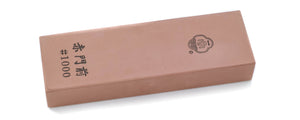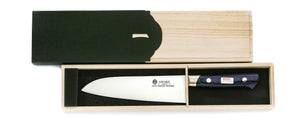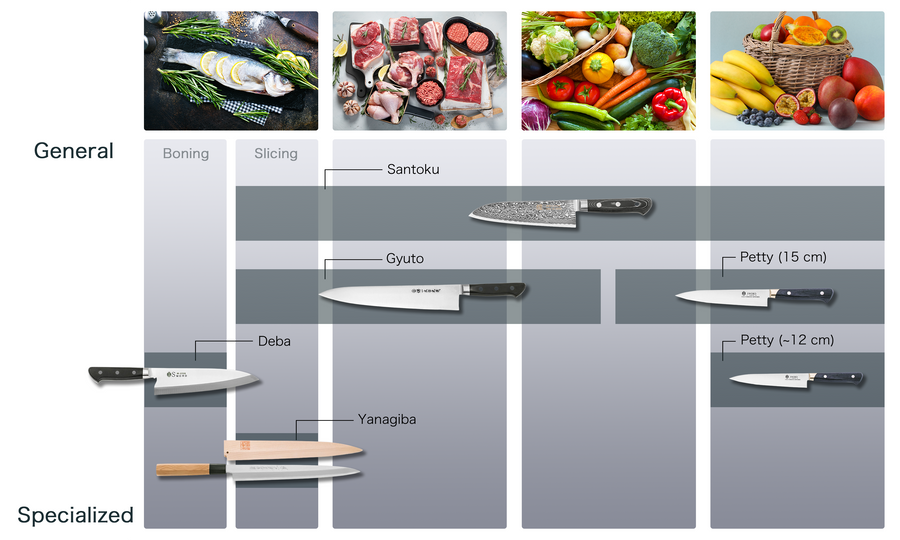
VG-10 Mono Stainless Steel with Japanese Style Teak Wooden Handle
This VG-10 blade has a good balance between edge retention and ease of sharpening. The teak wood handle also offers excellent durability and water resistance. Known as one of the "world's three most precious kinds of wood", the teak keeps your knife's tang safe from harm.
| Product number | Actual Blade Length (mm) | Full Length (mm) | Total Weight (g) |
|---|---|---|---|
| 1cvfchs | 165 | 310 | 110 |
| Blade | Material Name | Handle |
|---|---|---|

Double Edged |
VG-10 | Teak wood |

Wa-Santoku
A Wa-Santoku is typically used in households around Japan. Unlike the standard Santoku, the Wa-Santoku has a traditional Japanese handle which shifts the balance point slightly,allowing more nimble cutting.
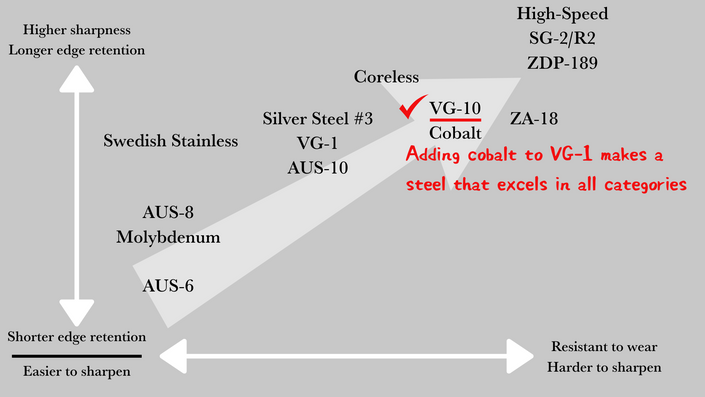
VG-10
Adding cobalt to VG-1 stainless steel's composition increases its wear resistance and tenacity. The resulting VG-10 stainless steel is also easy to process, making it easy to create well-balanced kitchen knives.
Stainless Steel
VG-10 is one of the most popular stainless steels used in kitchen knives today and is made from carefully selected and high-purity raw materials with good machinability. VG-10 is both hard and tough, while staying easy to resharpen.This combination of factors gives the highly efficient VG-10 a strong advantage over other steels in its field.
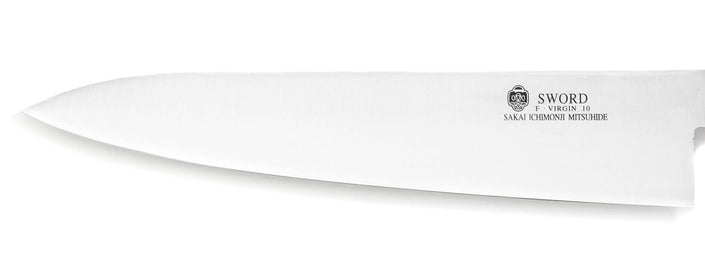
Mono Steel
Mono-steel knives, sometimes called single-steel knives, are made entirely of one piece of steel. Mono-steel knives have better cutting power versus clad and Damascus-finished knives with the same steel material. While mono-steel knives are vulnerable to impact damage, a master artisan can properly quench and remove the steel's distortions, removing this downside while creating a sharp cutting edge.

Optional Engraving
Optional Engraving Service
Sakai Ichimonji provides complimentary engraving using either Japanese Kanji or English Alphabet. Please specify your preference. For details, please visit here
A knife store that has supported the history of knives and food culture in Japan.
It has been 600 years since the birth of swordmaking in the Sakai region of Japan. Sakai Ichimonji Mitsuhide's and it's craftsmen continue to build on that legacy by producing the finest blades in Japan.
This is where the culture of completing a dish of sashimi by "just cutting" and the culture of expressing sharpness as "taste" was born.
For 70 years, we have been connecting the spirit of Sakai's craftsmen with the passion of chefs in Osaka's kitchen equipment shopping district, known as the kitchen of Japan.
We are very happy that our knives can be used by people all over the world.
Precautions
After use, wash off any dirt and wipe thoroughly with a dry cloth to remove any moisture. This product is not for use with frozen foods.This product is handmade, so each piece will be different. Please use the weight and length listed as a guide. Each material is natural and may vary in color. It is not the same as the picture.We take great care with our inventory, but in the unlikely event that we are out of stock, we will contact you by email to let you know.



























